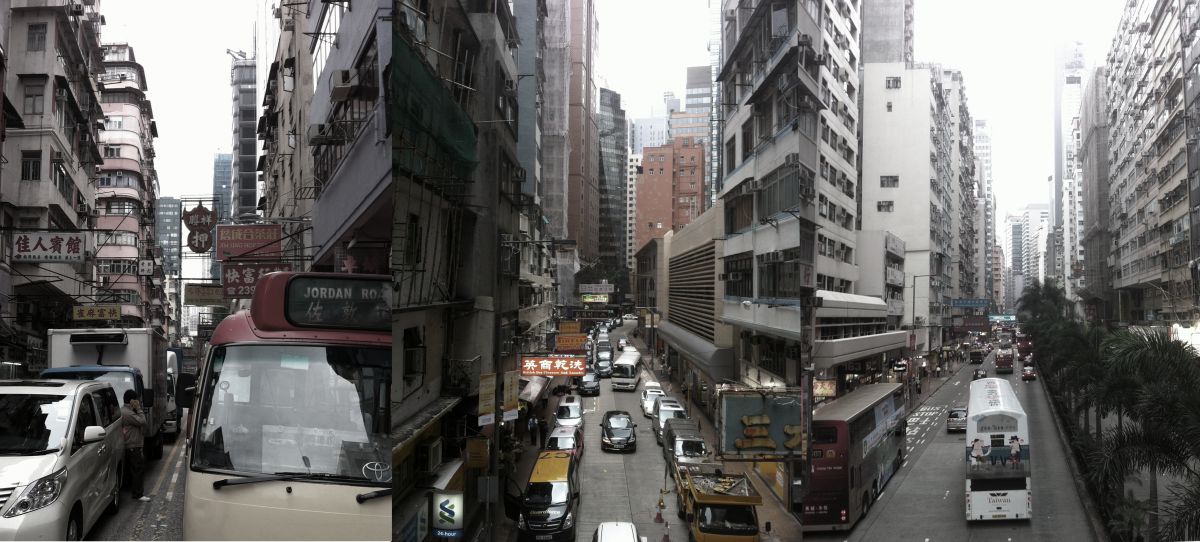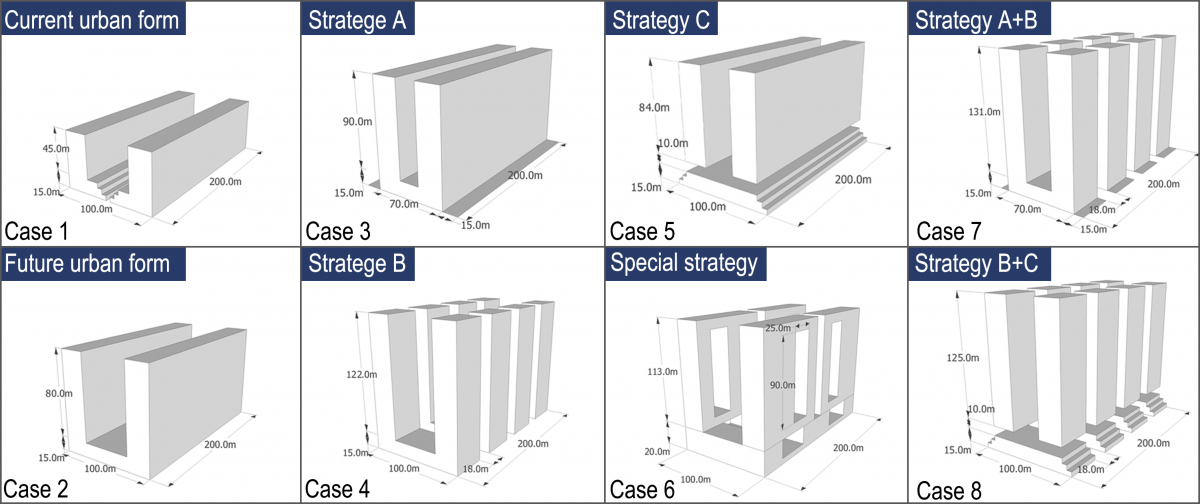Air Pollution
Air Quality in Street Canyons (Neighbourhood Scale)

Impact of Building Permeability on Air Pollutant Dispersion
Frequent reports of high air pollution concentrations at roadside stations at high density cities, e.g., Hong Kong, are the result of both higher anthropogenic pollution emissions in densely populated street canyons and stagnated airflow due to closely packed tall buildings, which result in lower dispersion potential and leads to increased population exposure to air pollutants.
Thus, it is critical to design appropriate high-density urban morphologies and building typology to lessen the negative impacts of high-density urban living. This study addresses the knowledge gap between planning and design principles, and air pollution dispersion mechanism in high-density cities, so that air ventilation assessment can appropriately take into account the air pollutant dispersion issues.

Figure. Heavy traffic at deep street canyons.
Neighbourhood-scale computational parametric study are conducted to clarify the effects of urban permeability and building geometries on air pollution dispersion, for both outdoor pedestrian environment and indoor environment of the roadside buildings.
In the parametric study, specific mitigation strategies are developed, and more importantly, the performance is evaluated to optimise the benefits of these mitigation strategies. The cost-benefit analysis is certainly important, given limited land resources in high-density cities and the numerous planning and design restrictions for developmental projects.
Last but not least, an actual urban case study is presented to demonstrate how the suggested design principles from the parametric study can be applicable in high-density urban design.
Outputs:
- We clarifies the air pollutant dispersion mechanism in high-density cities;
- Specific architectural design strategies are developed to addresses traffic pollutant problems at neighbourhoods;
- The study relies on a parametric study that tests the performance of design options;
- LES and RANS models are validated by cross-comparing with wind tunnel data;
- The parametric studies indicate both horizontal and vertical dispersion are important.
Publications:
- Yuan C*, Ng E, Norford LK, 2014, Improving air quality in high-density cities by understanding the relationship between air pollutant dispersion and urban morphologies, Building and Environment. 71, pp 245-258
- Yuan C*, Ng E, 2012, Building porosity for better urban ventilation in high-density cities – A computational parametric study, Building and Environment. 50, pp.176-189.

Figure. Parametric models to investigate effect of building typologies on air pollutant dispersion.